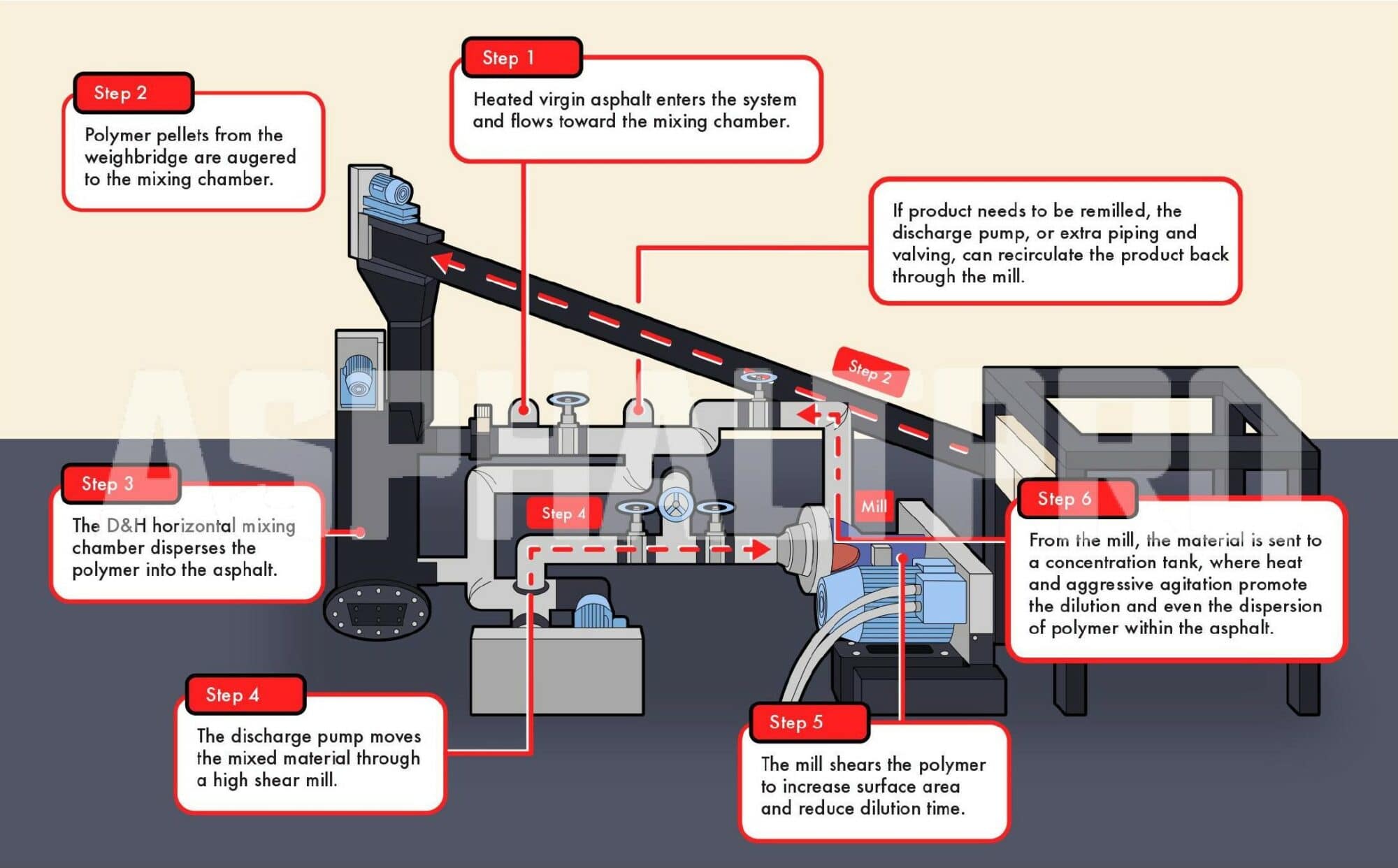D&H Equipment’s PMA Blending Plant
BY AsphaltPro Staff

Polymer-modified asphalt (PMA) is a premium product consisting of liquid asphalt binder combined with polymers to improve overall durability and in-service pavement performance. D&H Equipment, Blanco, Texas, offers production equipment for inline blending, milling and processing of PMA. Here’s how it works:
The modified asphalt production process starts by heating the asphalt to dissolve the polymer and to compensate for addition of ambient temperature dry material during the process.
Next, polymer pellets are loaded using a bulk bag unloading system into a feed hopper. A weighbridge at the bottom of the polymer feed hopper controls the discharge of dry material into another lift auger for transportation to the mixing chamber.
Neat asphalt is metered through a mass flowmeter by a variable speed pump. The automated controls manage the flow rate of the incoming liquid asphalt and adjust the feed of desired dry material to meet input ratio specs. As asphalt flows through the system, the polymer feed is managed by the automated controls based on the asphalt flow rate and the desired polymer percentage.
Materials then enter the D&H horizontal mixing chamber where polymer is dispersed into asphalt. A discharge pump transfers the mixed material through a high shear mill, which shears the polymer to increase surface area and reduce dilution time.
From there, the product is sent to a concentrate tank for processing. Heat and aggressive agitation inside the processing tank promote the dilution and even dispersion of polymer within the asphalt until the polymer has fully dissolved into the asphalt.
If a polymer concentrate was produced (typically using around 9-15% SBS by weight), then it is generally diluted to 6% or less so that it can be safely crosslinked. Crosslinking the final product creates a molecular net that keeps the polymer molecules in suspension and prevents separation of the polymer and asphalt during storage. Typical finished products are further diluted to around 2-4% polymer by weight, based on the desired mix design/specs.
For more information, visit https://www.dhequip.com/.
